Cycling vs Public Transport: Which Is Better for Your Commute in 2025?
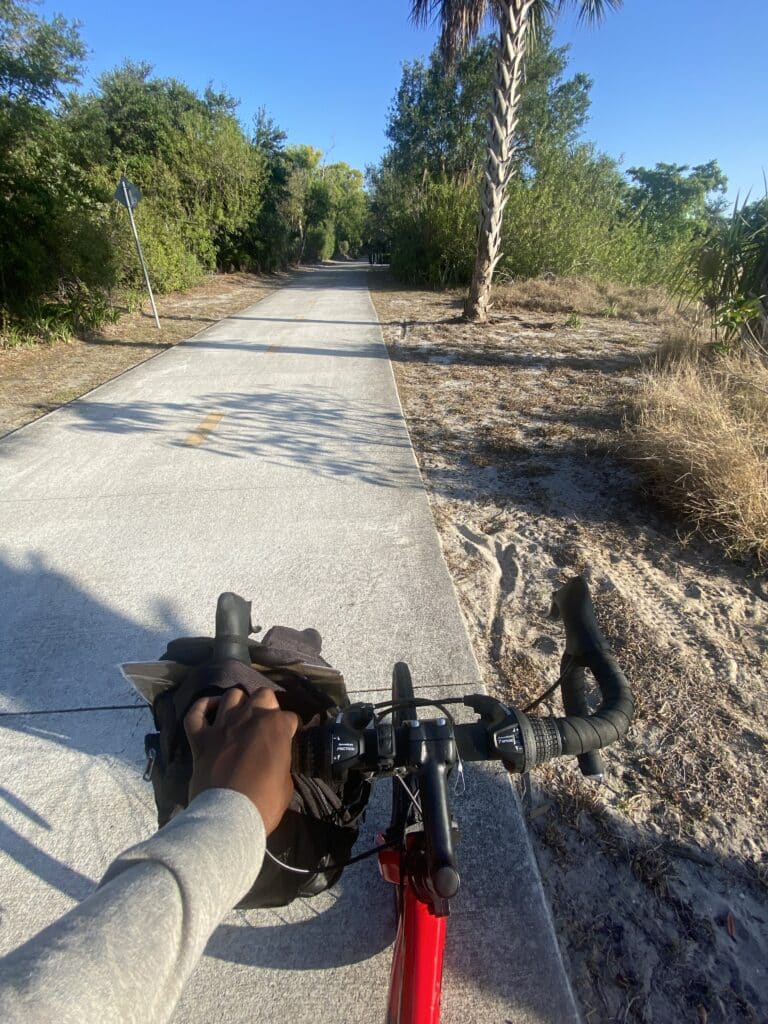
Did you know that nearly 1 million people bike to work every morning, and the largest percentage of bike commuters in the United States in Portland with a whopping 22,000.
Who am I?
My name is Caleb Toliver! I’ve been urban cyclist for 4 – 5 years, and over the past 3, I’ve became the guy who goes everywhere with his bike and people say almost inseparable picking up so much knowledge as I’ve gone.
While traversing bike routes in my city, I can tell you that the ways of conquering traffic isn’t always straightforward in general!
What is this and why is it important?
Almost every city has at least a bus with maybe a bike rack so it makes you think, what’s the best way of getting around? Each option offers distinct advantages depending on your lifestyle, location, and priorities.
In this article I dive deep into the cycling vs public transport showing the importance of both transport modes.
What’s the Cost Comparison of Cycling v Public Transport?
I’ve heard people talking online, in-person in local advocacy groups and the discussion always is cycling vs public transport, and why? When I first moved to my current city in 2023, I was shocked at how quickly transportation costs ate into my monthly budget, and at the time it was me taking the bus from my apartment. I remember standing at the ticket machine, staring at the monthly pass price and thinking, “There’s gotta be a better way.”
That’s when I started going beyond using cycling as an afterthought, but also considering cycling as an alternative for transport. Let me break down what I’ve learned about the real costs of both options after years of tracking my expenses.
First off, let’s talk upfront costs. A decent commuter bike can run you anywhere from $300 to $1,000 – I got mine on sale from $330, which for the average person like me is breaking the bank. But here’s the thing: that monthly transit pass in my city costs over $100 and the bus weekly pass is $20 a week, which means my bike paid for itself in just under 4 months. If you’re really pinching pennies, you can often find quality used bikes for under $200 that’ll do the job just fine on marketplace.
Of course, with cycling comes additional gear costs that people often forget to factor in. When I started, I thought I’d just need the bike. That’s just the first part of the story. A good helmet if you’re using one ($20 – $100), lights ($20), lock ($30-$60), basic repair kit ($25), and weather-appropriate clothing added up fast. All told, I spent about $300 on gear that first year. But many of these are one-time purchases that last years.
Now for the ongoing costs. Public transit is pretty straightforward – in most cities, you’re looking at $80-150 per month for unlimited passes. Hopefully you wouldn’t be driving to the stations. Over a year, that’s $960-1,800 straight out of your pocket. Cycling maintenance costs me about $150-200 annually – occasional tune-ups, new tubes, chain replacement, and the rare bigger repair.
And let’s say you get a really quality bike, you may only spend $50 – $100 on it per year. Even adding occasional ride-share trips on terrible weather days, or cycling transit when I’m taking the train, I’m still saving over $1,000 a year. What most people don’t consider are the hidden costs.
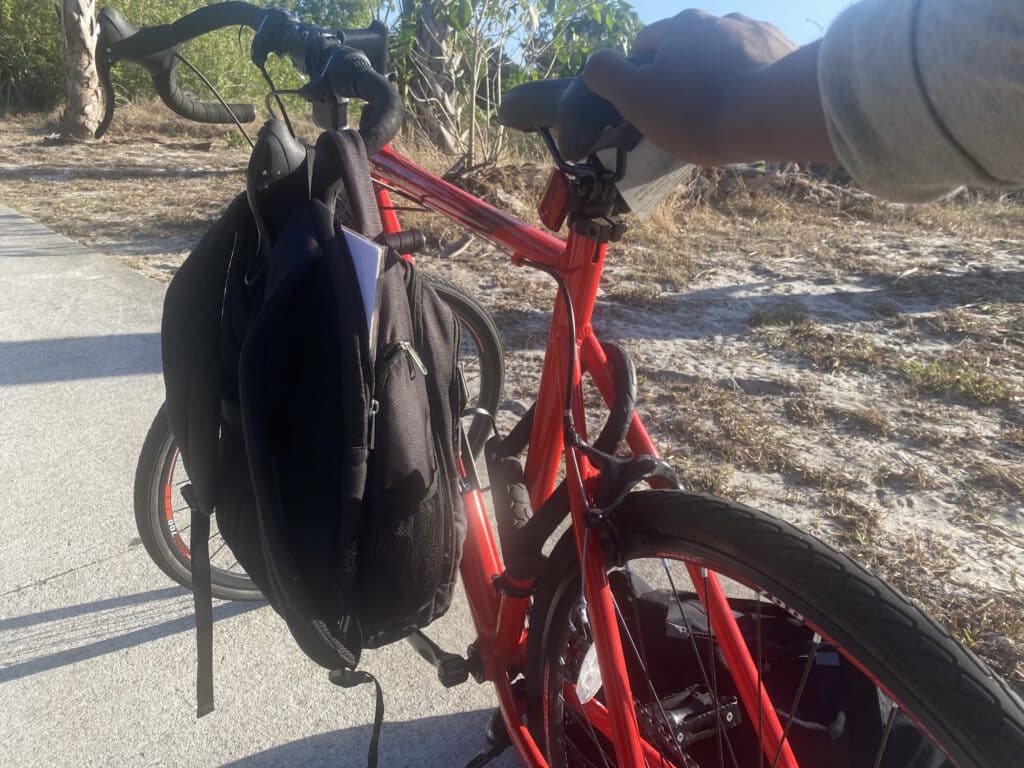
With public transit, there’s the “last mile problem” – you might need additional transportation to reach stations, which adds up. Also, rigid schedules sometimes mean wasted time waiting, which has a real economic value. For cycling, many workplaces now offer secure bike storage, but if yours doesn’t, theft risk becomes a hidden cost factor.
The distance factor changes everything. For short commutes (under 3 miles), cycling wins hands down financially. My 2.5-mile commute takes ra shorter amount of time than busing when you factor in walking to stations and waiting, it may be different for your area but where I’m at in which every 30 minutes it doesn’t work out. For medium distances (3-7 miles), it’s still often cheaper to cycle but time costs become more relevant.
Long commutes over 7 miles start tipping the financial scales toward public transit, especially when you factor in the time value. Health benefits represent the biggest hidden financial advantage of cycling. I used to spend $50 monthly on a gym membership I barely used. Once I started cycling daily, I canceled it. My annual healthcare costs have dropped too – fewer colds, better sleep, and improved mental health. It’s hard to put an exact number on this, but research suggests regular cyclists save thousands in healthcare costs annually.
As of 2025, many cities offer impressive financial incentives for both options. My employer provides a $50 monthly stipend for sustainable transportation choices. The government offers tax breaks of up to $280 annually for bike commuters in some areas. Some health insurance companies even provide premium discounts of 10-15% for active commuters – worth checking if yours does! One last thing I’ve learned the hard way: factor in replacement costs. My bike has lasted 5 years with good maintenance, but eventually, you’ll need a new one. Transit passes, on the other hand, are a predictable recurring expense.
Bottom line? For most urban commuters, cycling works out significantly cheaper than public transit over time, especially when you factor in health benefits. But the right choice depends on your specific situation – distance, climate, and infrastructure all matter a ton.
Health Benefits: The Physical Impact of Your Commute Choice
You won’t believe how my health directly benefited from cycling and how I changed my mindset based on health, I was burning 500 calories everyday and with me cycling to work with that commute, (sounds unbelievable,) I learned that I also didn’t need to eat as much only needing water as well. The first week was rough – I won’t lie. I actually showed up late once, and barely was able to stand up doing my retail job.
But something unexpected happened by week three. I started looking forward to my ride and knew even with bad weather I’d pull out my thin athletic pants and my nice waterproof jacket.
The mental health benefits were even more surprising. I used to wait 20 minutes for a bus, and after I always had to stay up and make sure I was ready to press the right stop, and couldn’t go to sleep due to the constant bumping. Now, funny enough me biking that route is faster than me hopping on that same bus to the strip-mall.
There’s something about the rhythm of pedaling and the feeling of moving under your own power that just melts anxiety away. Studies show that noise pollution is a big stressor for commuters on public transit and even as much as I love it. I can definitely confirm this! Even on days when traffic is bad, I feel more in control on my bike than I ever did on public transport. The endorphin release is real, folks – that “cyclist’s high” isn’t just made-up.
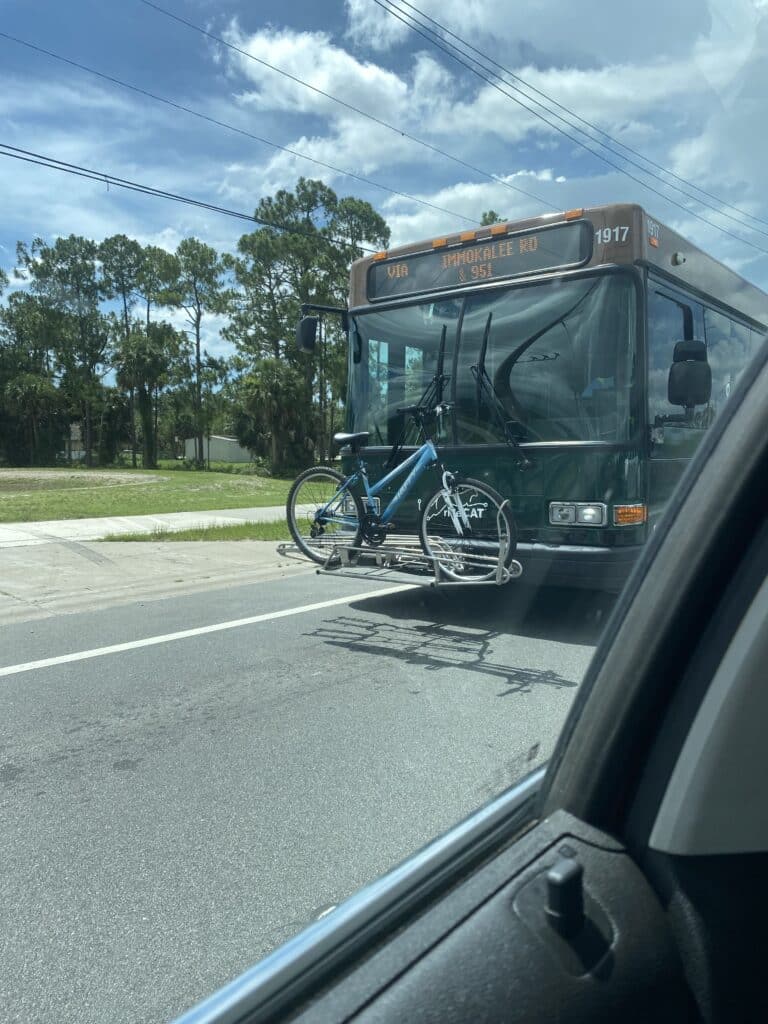
What about air pollution? This was a big concern for me. Surprisingly, research from the University of Cambridge found that cyclists are often exposed to less pollution than public transport users. This seems counter intuitive, but many bike routes can be planned through parks and side streets, while buses and trains follow major thoroughfares with heavier pollution.
I use an app to plan the least congested routes, and the difference in air quality is noticeable. Meeting daily physical activity targets became effortless once I started bike commuting. The WHO recommends 150 minutes of moderate exercise weekly – my commute alone gives me 300+ minutes! Before cycling, I was part of the 80% of Americans not meeting basic activity guidelines despite my best intentions and that unused gym membership.
My knees occasionally complain, especially after I pushed too hard trying to beat my personal best time (not my smartest moment). But compared to the health issues I was developing from sitting all day – on the bus, at my desk, then on my couch – it’s a trade-off I’ll gladly accept. What’s been game-changing is how cycling doesn’t feel like “exercise” anymore – it’s just how I get around. No more excuses about not having time to work out. My commute pulls double duty as my exercise time, and those endorphins have made me a happier person overall.
If you’re considering making the switch, start small. Maybe cycle one or two days a week while using public transport the other days. Your body (and mind) will thank you, and you might just find yourself looking forward to Monday mornings for the first time ever!
Time Efficiency and Reliability
Mentioned earlier, I used to think public transport was always faster than cycling until I timed my commutes for a month straight. After tracking every journey with powerful precision, I discovered some eye-opening patterns about which method actually gets me where I’m going faster.
For short trips under 2 miles in urban areas, cycling consistently beats public transport by a landslide. My 1.8-mile journey to the grocery store takes just 10 minutes by bike, door-to-door. The same trip via bus? A whopping 25 minutes when you factor in walking to the stop, waiting time, and walking from the final stop. It’s ridiculous how long these things take, they should really be improved. What really surprised me was the medium-distance sweet spot. For trips between 2-5 miles in my moderately congested city, cycling still won about 80% of the time!
Traffic congestion affects both options but in vastly different ways. During a particularly nasty construction period downtown last summer, bus commute times ballooned by 45% during rush hour. Meanwhile, my cycling times increased by only 15% since I could navigate around the worst bottlenecks. This revealed something crucial: bikes offer predictability that public transport often can’t match.
I learned this lesson the hard way when I missed an important meeting because my usually reliable bus sat motionless in unexpected traffic. The next day, I biked the same route and arrived with time to spare, despite the congestion being even worse. The ability to maintain consistent arrival times has become one of my favorite cycling benefits – no more adding “buffer time” to every journey.
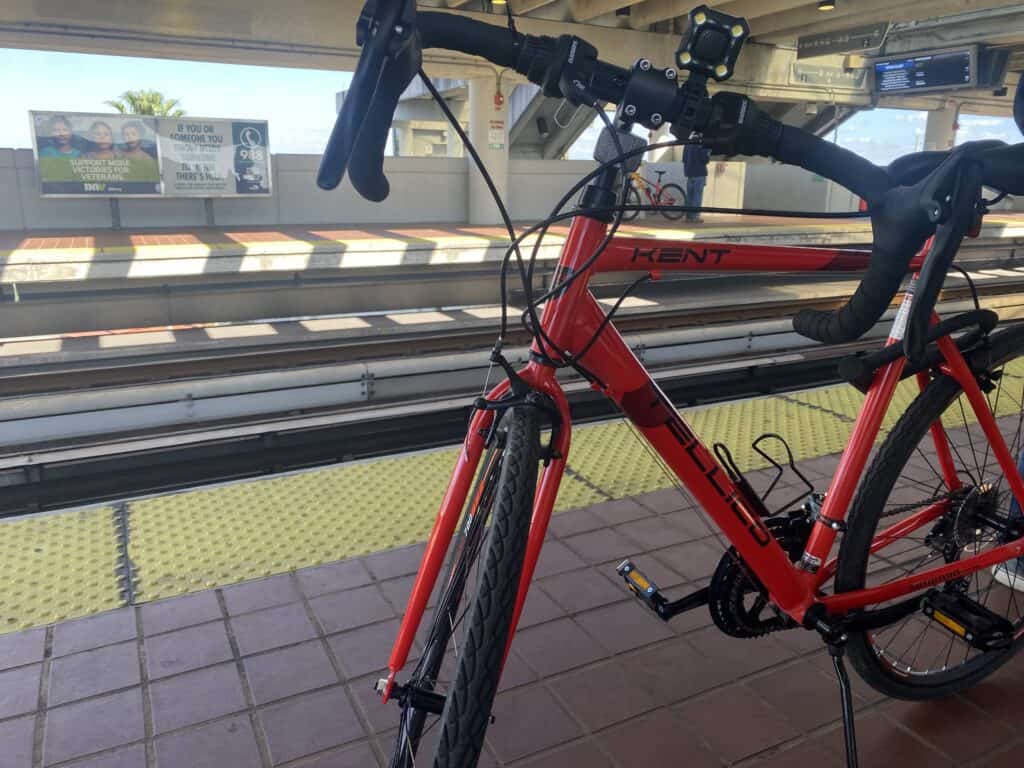
Weather is cycling’s Achilles’ heel, no doubt about it. During my year-long tracking experiment, rainy days increased my cycling commute times by about 20% due to more cautious riding. Heavy snow made cycling nearly impossible on three occasions (I stubbornly tried anyway and ended up walking half the distance). Public transport, while certainly affected by severe weather, provided more consistent service during poor conditions.
Temperature extremes created interesting patterns too. Brutal summer days slowed my cycling pace by about 10% as I tried not to arrive drenched in sweat. Freezing winter mornings added about 5 minutes to my typical commute due to extra clothing and more careful riding on potentially icy patches. These seasonal variations are definitely worth considering when choosing your regular commute method.
Peak hour dynamics revealed some fascinating insights. During morning rush (7:30-9:00 AM), cycling beat public transport on my mile commute by an average of 10 minutes. The evening rush advantage was even greater – my bike commute home took 15 minutes versus 25 minutes by bus. This is because public transport suffers from both road congestion AND crowding issues during peak times, creating a double-whammy of delays.
After nearly missing a crucial job interview due to an unexpected transit strike, I developed what I call my “reliability hierarchy” for time-sensitive trips: bike first, rideshare second, public transport third. For non-time-sensitive journeys where I can enjoy reading or catching up on emails, that order flips completely.
Some practical time-saving strategies I’ve discovered: for cycling, mapping apps specifically designed for bikes (not car navigation) can shave minutes off by using bike-only paths and avoiding unnecessary hills. For public transport, boarding at an earlier stop on the line often guarantees a seat and can actually be faster overall despite a longer ride time.
The reliability factor ultimately comes down to control. On my bike, delays are usually my responsibility and within my power to fix. On public transport, delays happen for countless reasons beyond my control – a significant mental difference in how frustrating commute problems feel.
What’s your most time-efficient option? The answer depends on your specific routes, available infrastructure, and personal preferences – but don’t just assume public transport is faster without actually testing both methods on your regular journeys. The results might surprise you as much as they surprised me!
Practical Considerations for Different Lifestyles
.Distance and terrain turned out to be make-or-break factors that I’d seriously underestimated. My new workplace was 7.2 miles from home – manageable by bike in theory. But add in the hilly terrain with a 400-foot elevation gain, and suddenly my out-of-shape self was arriving at work looking like I’d gone swimming in my clothes.
Climate considerations hit me like a thunderstorm – literally. My city has just enough rainy days per year, which I discovered means owning serious rain gear or accepting that public transport would be my frequent fallback. In regions with extreme seasons, your commute choice might change completely between summer and winter. Lucky for me I live in Florida which means it will be at the very least 45 degrees or higher at worst. Even then we freak out, but I always make sure to prepare for weather blips like this.
What the cycling enthusiasts rarely mention is the accessibility factor. My mother-in-law who lives with us has arthritis that makes cycling impossible for her. Public transport, while not perfect, at least offers accommodations for different physical abilities. When she needed to get to weekly physical therapy, the accessible bus service became our only viable option. This experience completely changed my perspective on transportation equity.
Professional requirements threw another wrench in my cycling plans. Special events I go to expect a certain level of polish that was difficult to maintain while cycling. Despite my best efforts with carefully packed clothes and office shower facilities, I couldn’t quite match the freshness of arriving via climate-controlled public transport. There’s also people I know who go to events, like business networking events, where they cannot get their clothes dirty or even restaurants which will not let them in wearing the gear they wear to bike.
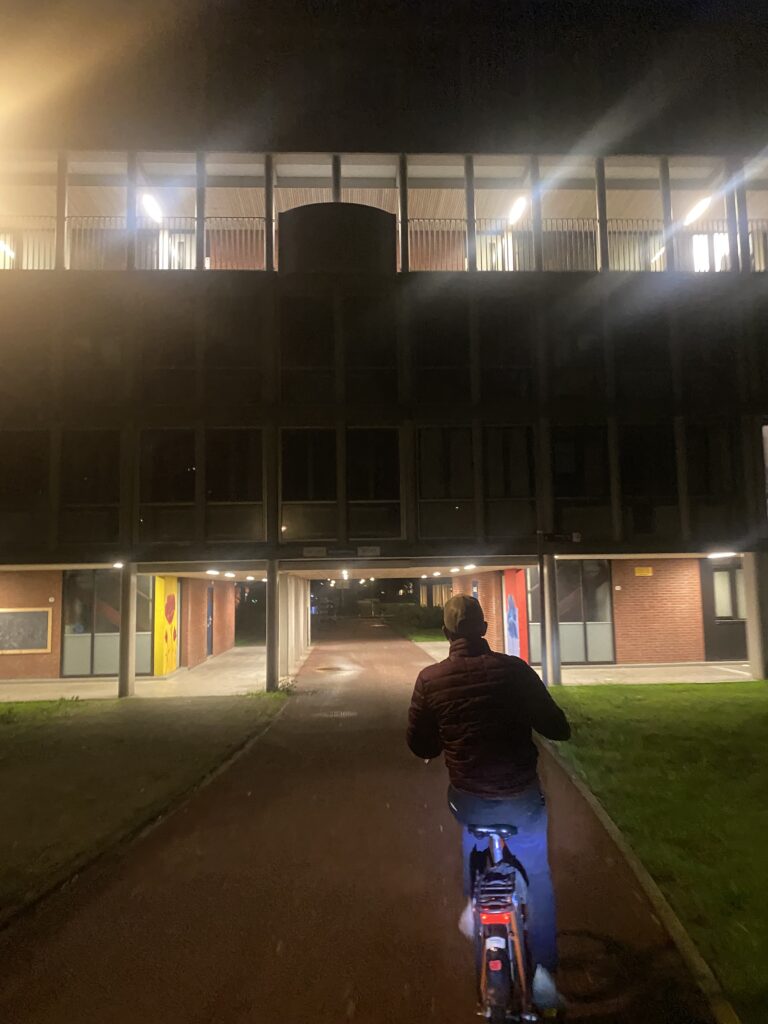
The dreaded “what if it rains during the day?” scenario played out countless times. I’d cycle in on a beautiful morning only to face an unexpected downpour at 5pm. Public transport offered more flexibility for changing conditions, though at the cost of spontaneity. This unpredictability factor is something many cycling advocates gloss over but matters tremendously in real life.
Safety statistics initially scared me away from cycling. The raw numbers showed higher injury rates per mile for cyclists compared to public transport users. However, digging deeper revealed nuance – many cycling injuries happen to inexperienced riders or those making high-risk choices. After taking a confident cycling course and investing in quality lights and reflective gear, my personal risk level decreased substantially. Still, I can’t deny that my bus-riding days come with virtually zero injury risk compared to cycling.
The mental load difference between the two options deserves serious consideration. With cycling, I needed to think about weather forecasts, appropriate clothing, security for my bike, and potential route hazards. Public transport required constantly checking schedules and service alerts. Neither option offered the mindless convenience of car travel, but in different ways. I found cycling actually reduced my overall stress despite requiring more planning.
One practical consideration that rarely makes the pros/cons lists: the social aspect. My public transport commute was isolated despite being surrounded by people – everyone buried in phones with headphones on. Cycling unexpectedly connected me with a community of fellow riders. We now have “bike train” groups that commute together, improving both safety and enjoyment. This social dimension has become one of my favorite aspects of bike commuting.
After five years of real-world testing, our family has settled into a pragmatic mixed approach: cycling for trips under 5 miles in decent weather, public transport for longer journeys, bad weather days, and when transporting multiple people, and occasionally rideshare for time-sensitive situations. This flexibility serves us better than dogmatic adherence to either option.
The most valuable lesson? Transportation choices aren’t just practical – they’re deeply personal, influenced by physical ability, family structure, work culture, and individual priorities. What works beautifully for my family might be completely impractical for yours. The key is honest assessment of your specific situation rather than trying to force-fit someone else’s ideal commute solution into your unique life.
Urban Infrastructure and Future Developments
I still remember the day I nearly got doored while cycling down what my city proudly called a “bike lane” – really just a painted line running alongside parked cars. After that close call, I started paying serious attention to urban infrastructure and how dramatically it affects transportation choices. I’ve since become that annoying friend who photographs bike lanes and transit stations while on vacation. My family thinks I’m weird, but I’m fascinated by how different cities approach mobility!
The current state of cycling infrastructure varies wildly between major cities, creating completely different experiences for riders. When I visited Amsterdam, I was blown away by their comprehensive network – over 500 kilometers of fully protected bike lanes, dedicated cycling traffic lights, and bike-specific underpasses. In fact, the cycling picture I sent before with the jacket on that’s my brother biking with me in Amsterdam it’s incredible.
Compare that to my hometown, where our “network” consists of disconnected segments that mysteriously end at the most dangerous intersections. These infrastructure differences explain why Amsterdam enjoys a 38% cycling mode share while many American cities hover below 2%.
Protected infrastructure makes all the difference. After my city installed just 3 miles of barrier-protected bike lanes downtown, cycling trips along that corridor increased by 63% within six months. The “build it and they will come” effect is real! Cities like Paris have demonstrated this dramatically – after adding 50km of emergency bike lanes during the pandemic, they saw a 54% increase in cycling. They wisely made those changes permanent and committed to becoming a “100% cyclable city” by next year.
Public transport is undergoing its own revolution. Bus Rapid Transit (BRT) systems are expanding rapidly as a cost-effective alternative to rail, with dedicated lanes and signal priority that bypass congestion. These systems deliver nearly rail-like performance at a fraction of the cost. My neighboring city’s first BRT line opened this year, cutting crosstown commute time by 40% compared to regular bus service.
The concept of 15-minute cities – where all essential services are accessible within a 15-minute walk or bike ride – represents perhaps the most fundamental infrastructure shift. This approach, being implemented in Paris and Barcelona, essentially eliminates the need for motorized transport for many daily trips. Urban planners are increasingly recognizing that the best transport infrastructure isn’t a bike lane or bus route – it’s neighborhood design that reduces travel demand in the first place.
The most promising development I’ve observed is the growing integration of cycling with public transport – what planners call “multimodal transport chains.” New transit stations include secure bike parking and maintenance facilities. Buses and trains have dedicated spaces for bikes. Shoot I love them and I even displayed one earlier if you scroll up. Even bike share systems are being strategically located near transit stops to solve the last-mile problem. This integration recognizes that neither mode alone can solve all urban mobility challenges.
Despite these challenges, the trajectory is encouraging. The pandemic prompted unprecedented experimentation with quick-build bike lanes and pedestrian spaces. Many temporary changes proved so popular they’ve been made permanent. Meanwhile, transit agencies are rethinking service patterns for changing work habits, with some shifting from the traditional peak-hour focus to more consistent all-day frequency.
The future clearly belongs to cities that embrace flexibility and modal integration rather than pitting transportation options against each other. As someone who regularly uses both cycling and public transport, I’m hopeful about urban infrastructure that supports choice rather than forcing reliance on any single mode.
Conclusion
When it comes to choosing between cycling and public transport, there’s no one-size-fits-all answer. Your ideal commute depends on your specific circumstances including distance, fitness level, local infrastructure, and personal priorities.
While cycling offers unmatched health benefits, flexibility, and often the lowest environmental impact, public transport excels in weather independence, longer distances, and accessibility. For many urban commuters, the best solution might be a hybrid approach—cycling when conditions are favorable and using public transport when needed.
Whatever you choose, moving away from car dependency is a win for both personal well-being and planetary health. Why not challenge yourself to try a new commuting method this week? Your body, wallet, and the environment might just thank you!
